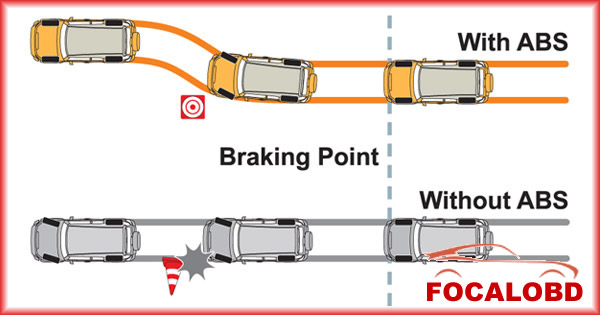

- #DEVELOPMENT OF ANTI LOCK BRAKING SYSTEM DRIVERS#
- #DEVELOPMENT OF ANTI LOCK BRAKING SYSTEM DRIVER#
- #DEVELOPMENT OF ANTI LOCK BRAKING SYSTEM FULL#
ADAMS - Multibody Systems Analysis Software. Computer simulation of suspension abuse tests using ADAMS. Colloquium on Tyre Models for Vehicle Dynamic Analysis, Swets & Zeitlinger, Lisse, 1–18. The magic formula tyre model, tyre models for vehicle dynamic analysis: Proc. The anti-lock braking system model was attached to a vehicle model to simulate possible braking conditions. (1999) The Integration of Tyre, Suspension and ABS Models into Vehicle Braking Simulations. DEVELOPMENT OF AN ANTI-LOCK BRAKING SYSTEM MODEL 32 This work presents the development of a braking system model to be applied in the evaluation of anti-lock braking system (ABS) control logics. Simulation of a vehicle suspension with the ADAMS computer program. The German firm of Robert Bosch GmbH had been developing anti-lock braking technology since the 1930s, but the first production cars using Boschs electronic. Development of antilock braking traction and control systems of the advanced technology demonstrator II using DADS simulation code. ADAMS/Solver Subroutine Reference Manual. Electronically Controlled Braking Intervention Systems in Europe. Springer VDI Verlag (Zeitschrift 96), 973. The first fully-electronic anti-lock braking system was developed in the late-1960s for the Concorde aircraft. A range rover handling model in ADAMS, multi-body system dynamics codes for vehicle dynamics applications. Steady State Cornering Behaviour for Road Vehicles: BS AU 189, British Standards Institution. Methods of Test for Lateral Transient Response Behaviour of Passenger Cars: BS AU 230. The suggested method's result analysis revealed the fact that the feature which is security that has been proven to be very effective method that detects and blocks any third-party that has been. Effect of Braking on Steady State Cornering Behaviour of Road Vehicles: BS AU 205. Until reliable techniques are developed, accidents involving vehicles with ABS systems will require. WABCO begins to develop its own electronic systems based on analogue and inte- grated. Further possibilities are currently the subject of research. Engineering Design 7, 4, 377–396.īritish Standards Institution (1986). Anti-lock braking systems can be traced back to the 1920s, when engineers first applied the concept of an automatic override braking. teamwork push both system development and vehicle testing ahead. The modern ABS system was invented in 1971 by. The role of multibody systems analysis in vehicle design. The first fully-electronic anti-lock braking system was developed in the late-1960s for the Concorde aircraft. Anti-lock braking systems can be traced all the way back to the 1920s, when engineers first applied the concept of an automatic override braking system to. The Influence of Suspension and Tyre Modelling on Vehicle Handling Simulation. To understand the underlying physical effect which.
#DEVELOPMENT OF ANTI LOCK BRAKING SYSTEM FULL#
Full vehicle modelling and simulation using the ADAMS software system. The aim of an ABS is to minimize brake distance while steer ability is retained even under hard braking. A new tyre model with application in vehicle dynamics studies. Tyre modelling for use in vehicle dynamics studies. Vehicle dynamic handling computer simulation-Model development, correlation, and application using ADAMS. Over time, this adjusting can cause bubbles and wear on the brake fluid, which requires “bleeding’ of brakes to ensure continued efficiency.Antoun, R.

If the control unit for the brakes senses that any wheel is moving much slower than the overall speed of the vehicle, signaling a potential wheel lock issue, it reduces hydraulic pressure by adjusting the brake fluid on that brake to prevent the lock. In order to allow the ABS to engage, sensors are applied that monitor the rotation on each wheel.
#DEVELOPMENT OF ANTI LOCK BRAKING SYSTEM DRIVER#
The inclusion of automated pumping prevents the wheels from locking and allows the driver to focus on steering the vehicle to safety.

However, this required a division of attention between the steering and braking.
#DEVELOPMENT OF ANTI LOCK BRAKING SYSTEM DRIVERS#
Prior to the integration of anti-lock brakes, drivers were advised to pump the brakes themselves manually when skidding. The anti-lock braking system works to prevent that locking by sensing the speed of the wheels' rotation before pumping the brakes in a controlled manner. When the driver slams on the brakes in a dangerous situation (such as when driving along a slick or wet roadway), this may cause the vehicle to skid or hydroplane should the wheels lock up. Anti-lock brakes are a safety feature in modern cars and trucks that work by allowing electronic sensors and systems within the car (managed by the engine control module and the ABS module) to control the brakes on behalf of the driver in certain scenarios.


 0 kommentar(er)
0 kommentar(er)
